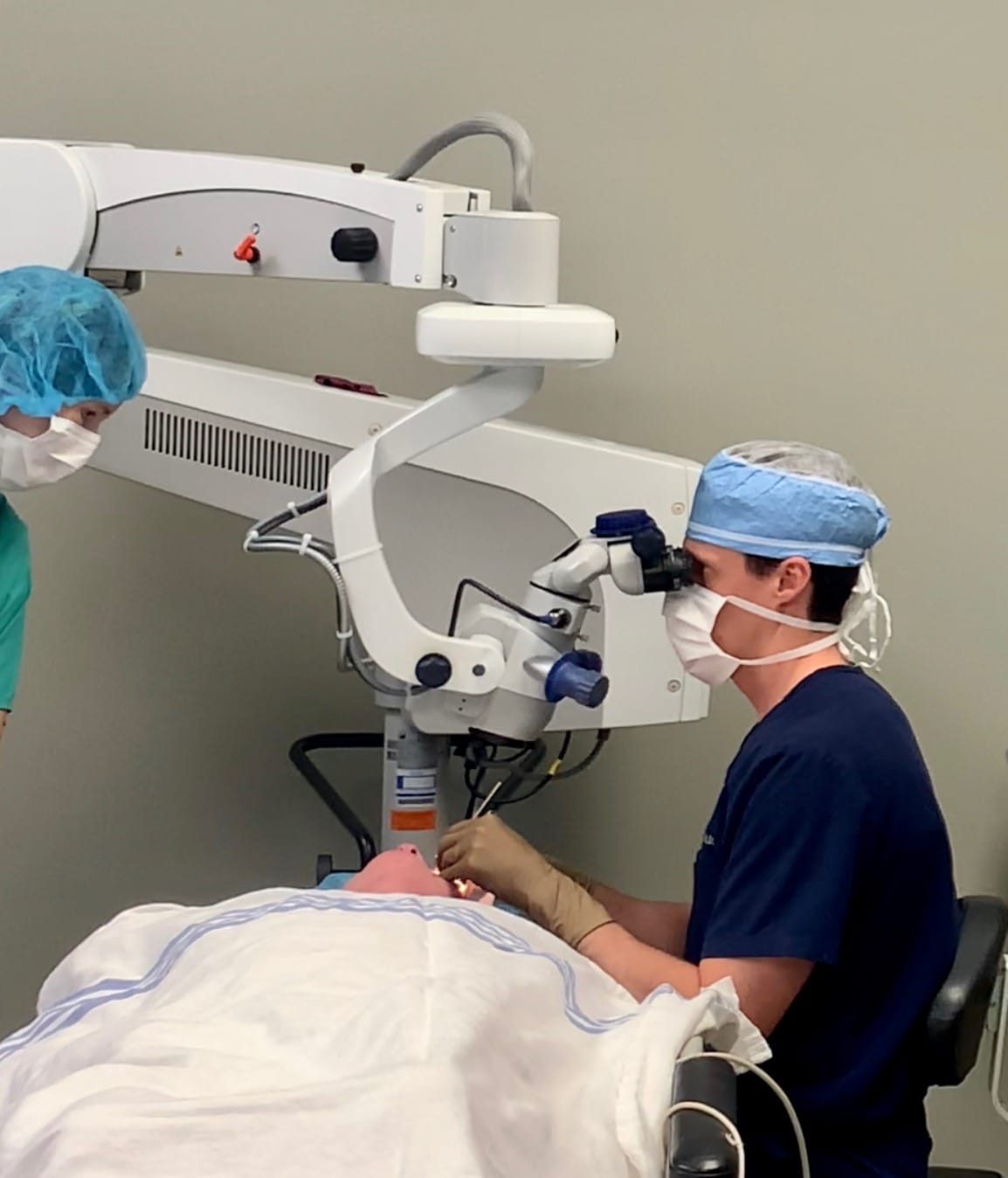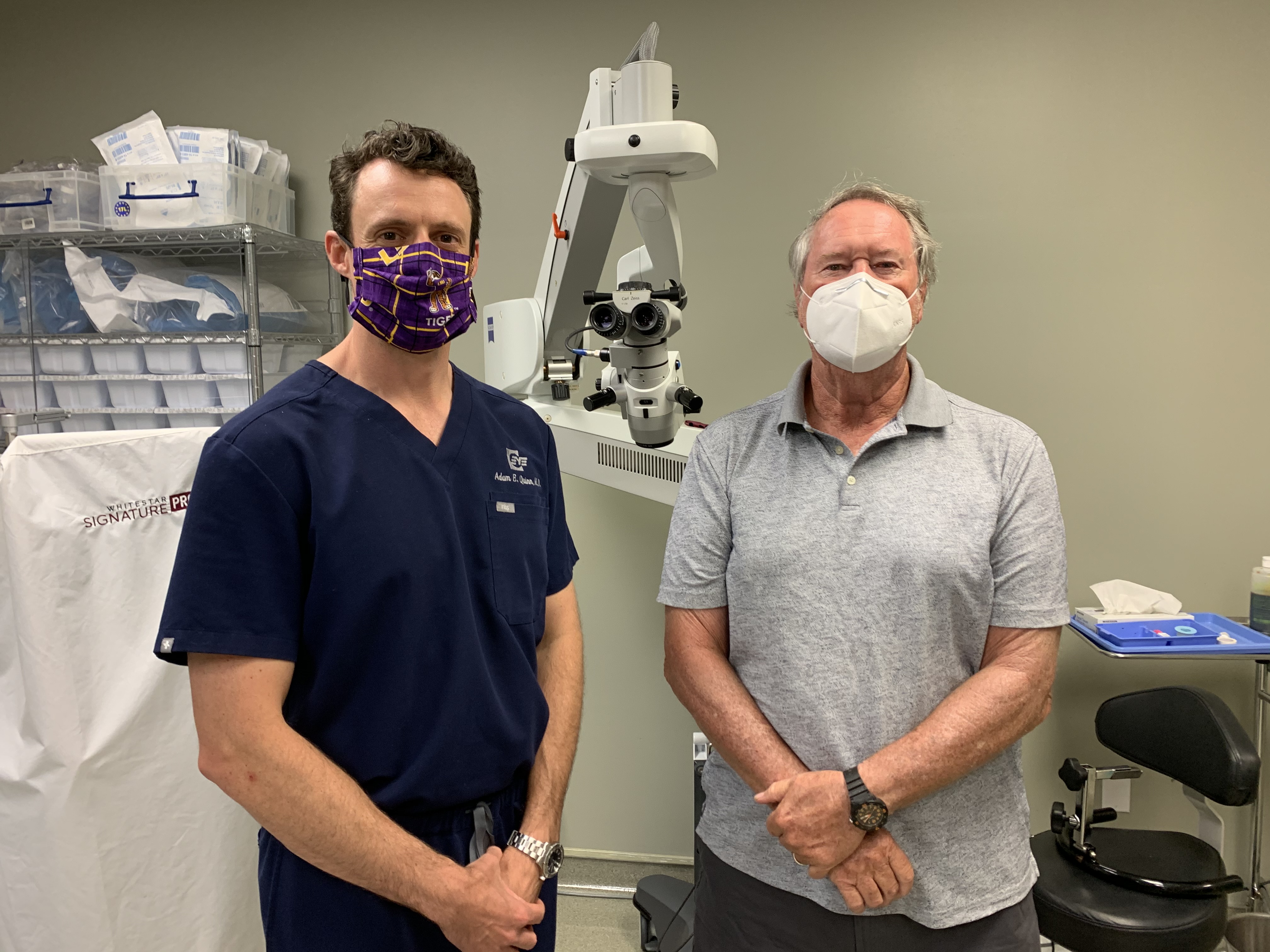Hattiesburg Eye Clinic Offers New Method for Managing Glaucoma Without Daily Eyedrops
Each year, glaucoma endangers the eyesight of millions of Americans. Although vision loss from glaucoma typically shows later in life, the ill effects from this progressive disease begin years earlier as elevated fluid pressure in the eye (intraocular pressure) gradually damages the optic nerve.
Although glaucoma can’t be cured, it can be managed and its impact on vision reduced by keeping intraocular pressure within normal ranges. One way to do this, especially for patients in the early stages of the disease, is through the daily use of medicated eye drops.
“Starting patients on self-administered daily eye drops is one of the most common methods we use for treating glaucoma,” says Dr. Adam Quinn, a fellowship-trained glaucoma specialist with Hattiesburg Eye Clinic, and the only glaucoma specialist to serve in a full-time capacity in South Mississippi. “Drops have proven to be very good at keeping intraocular pressure at normal levels long-term.”
But although effective, Dr. Quinn says drops do have their disadvantages. “Since we’re relying on patients to take the drops every single day, we’re often concerned about long-term compliance. The cost of the drops can also be prohibitive, especially if they’re not well covered by insurance.”

“DURYSTA™ contains one of the most powerful pressure management drugs on the market, but in a biodegradable implant,” Says Dr. Quinn. “We insert it into the anterior [front] chamber of the eye where it slowly releases medicine over several months, hopefully decreasing the patient’s dependency on drops.”
With Dr. Quinn recently becoming the first provider in Mississippi to place DURYSTA™ implants, Hattiesburg Eye now offers them to patients with open angle glaucoma (an inherited form of the disease) as a more convenient way to manage their intraocular pressure. According to Dr. Quinn, that can mean several months or possibly even years of normal fluid levels with little or no need for eye drops.
“The clinical studies found that a majority of patients saw good pressure control out to about 9 to 12 months,” says Dr. Quinn. “But a two-year follow-up also found a quarter of those patients were still experiencing good control, even though the implant had supposedly stopped working. If we can eventually get a majority of patients experiencing those kinds of long-term results, it could be a game-changer for overall quality of life.”
At present, the U.S. Food & Drug Administration (FDA) has limited the use of DURYSTA™ implants to one application. Dr. Quinn, however, is hopeful this will change. “There are ongoing trials to see if subsequent implant applications would be beneficial to patients. Until then, though, we may have to use a different drop when the implant finally wears off, or look at other interventional therapy at that time.”
Even in this limited form, glaucoma patients with Hattiesburg Eye Clinic may still be able to control their eye’s fluid pressure for some time without the daily inconvenience of eye drops. Thanks to the DURYSTA™ implant, they can go on with their daily lives knowing their glaucoma is under control.
To learn more about the DURYSTA™ implant, click here to learn more/ or call Hattiesburg Eye at (601) 268-5910 or Toll Free: (800) 624-8254.
###

